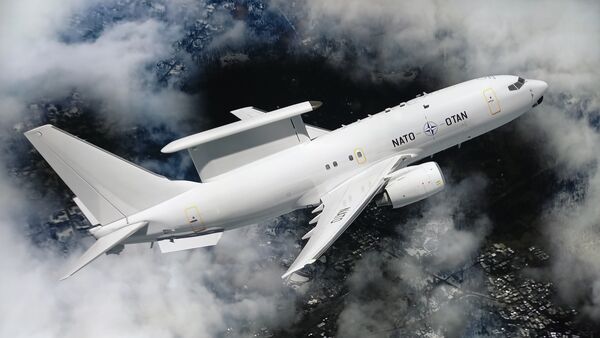
A rendered image of the Boeing E-7A Wedgetail AEW&C aircraft in NATO markings, showcased at the DSEI 2023 defence exhibition in London. (Boeing via Janes/Gareth Jennings)
NATO has selected the Boeing E-7A Wedgetail to replace its Boeing E-3A Sentry Airborne Warning And Control System (AWACS) aircraft.
The alliance announced the selection on 15 November, saying the approval was granted in the same month. Six aircraft will be acquired to begin operations from 2031.
The six Wedgetails will replace the 14 Sentries operated by the NATO E-3A Component out of Geilenkirchen in Germany, and which comprises Belgium, Canada, the Czech Republic, Denmark, Germany, Greece, Hungary, Italy, Luxembourg, the Netherlands, Norway, Poland, Portugal, Romania, Spain, Turkey, and the United States.
This component is part of NATO's wider Airborne Early Warning and Control (NAEW&C) Force that also includes the UK and its soon-to-be received three Wedgetail aircraft. Four E-7As are also operated by Turkey as the Peace Eagle (separate to the country's contribution to the E-7A Component), while the US is to field up to 26 aircraft as it looks to replace its own ageing E-3Gs. Although not a NATO member, Australia has deployed one of its six Wedgetails to Europe to assist with the alliance's efforts regarding Ukraine.
The E-3A is hosted on the four-engined 707 airframe. It is built around a rotating Northrop Grumman AN/APY-2 radome that has a coverage area of more than 500,000 km 2 of airspace, to look down and detect, identify, and track low-flying aircraft over land or water. A typical mission is flown with 21 personnel on board.
Looking to read the full article?
Gain unlimited access to Janes news and more...







